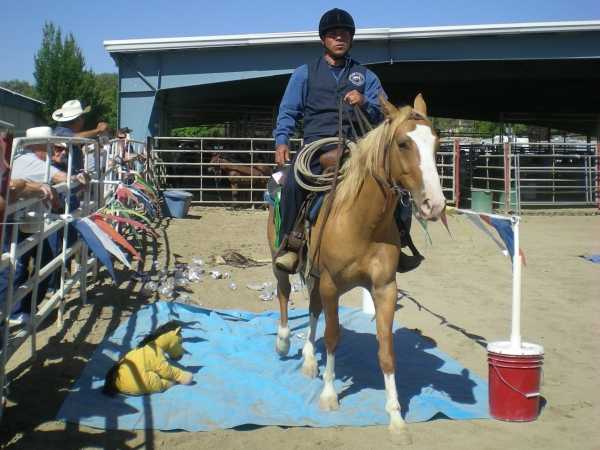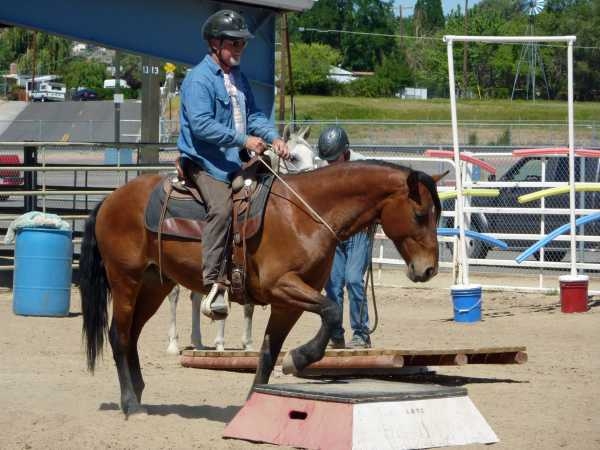|
This feature is a continuation of a multi-part series. Please visit Part One in which the context of this discussion is explained. The challenges illustrated below are just a few that we use, but are illustrative of the various training and confidence building objectives that we strive to achieve. Most illustrations provided involve lead line work, however the same principles apply under saddle.
Foot Placement and Spatial Awareness.
We have found that be following a logical progression we can increase the rate in which most horses learn to process potentially unsettling challenges and we can also improve reliability. We start with foot placement and spatial awareness.
The old timers say that you have to "talk to the horse's feet" or control their foot placement. This concept is valid. Before taking on complex challenges both the horse and handler / rider need to know where those feet are going and be confident in giving or receiving direction.
The Labyrinth. We start with a simple labyrinth. The handler often starts by leading the horse through on a light "ask." Once the horse understands the dimensions the handler will usually take a position closer to the shoulder so the horse has to calculate correct movements and maintain safe space from the handler while moving through the challenge. The handler should work from both sides of the horse. When the horse is very confident, backing through the labyrinth can be used to increase the challenge.
These footwork challenges not only involve the horse having to calculate space and footwork, but the handler needs to be able to "read" the horse's intentions and correct the cues given in order to help the horse be successful.
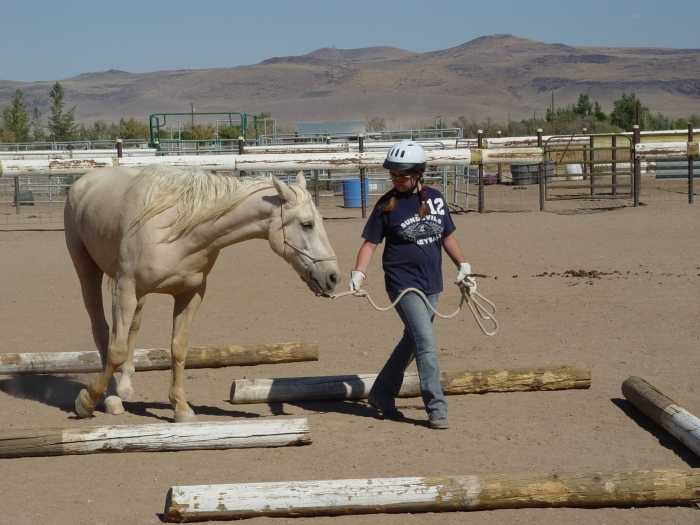
Narrow Mountain Trail. Once the horse can handle the labyrinth confidently and reliably, we often move on to "Narrow Mountain Trail," a zig-zagging narrow path defined by poles or railroad ties. Both horse and handler need to read the course and calculate their body positions relative to the sides of the trail and the spatial relationship between each other.
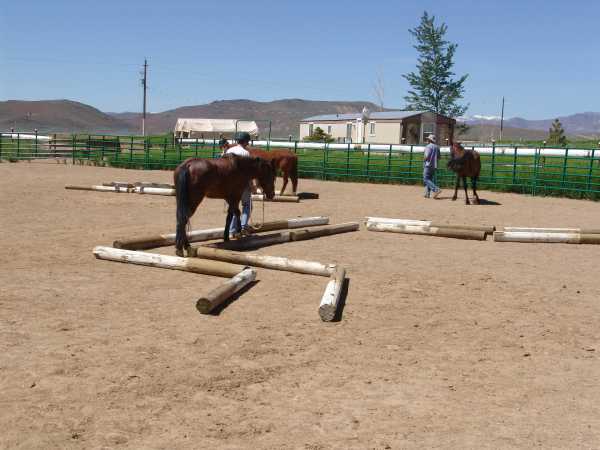
Fallen Log Lane. This challenge involves a lane in which poles are scattered across it. The "fallen logs" are arranged so that they will move if a horse steps into a narrow gap to prevent a hoof from getting stuck. As with the other obstacles, the object is for the horse to calculate foot placement and position in relationship to the handler. Our object is for the horse to respond confidently and reliably with a minimum of cues. In the image below, Trooper (a mustang with 90 days of prison program training that I had acquired less than a week earlier) is taking the obstacle by following hand cues.
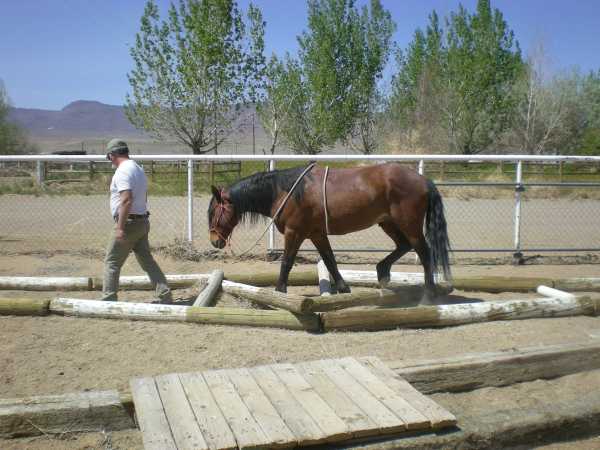
(The image that appears at the top of this page is of Trooper a few weeks later, taking all the obstacles under saddle while bridleless at the Reno Livestock Events Center.)
Multidimensional Challenges.
Once confident footwork has been achieved and the horses are responding reliably to their handlers' cues, it is time to add dimension to the challenges.
Waterfalls and Car Washes. "Waterfalls" (overhead streamers) and "car washes" (soft objects such as pool noodles protruding from both sides) provide opportunities for horses to process objects brushing alongside or overhead. As with the footwork obstacles, horses may need to be given a chance to study and process the challenge. Once the horse becomes less anxious and more curious, the horse should respond to the handler's "ask" and proceed.
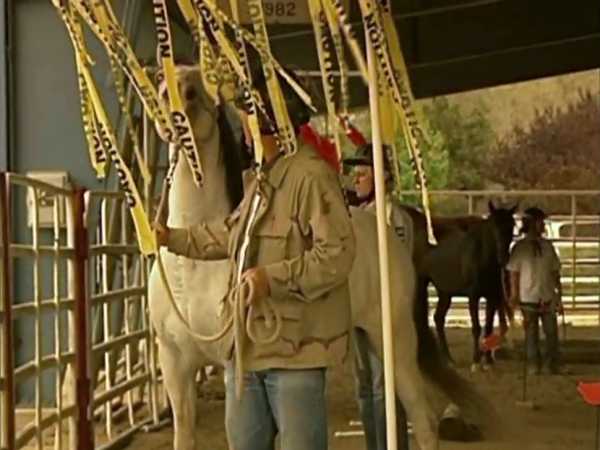
Bridges. There are all kinds of ways that bridges can be arranged and used. Various ideas are discussed in the links that appear in Part Four. The objectives associated with these challenges include:
- Responding to cues and stepping onto narrow obstacles instead of instinctively going around them.
- Maintaining spatial awareness, especially regarding the position of the handler.
- Stepping onto unusual footing such as planks that make noise when stepped on.
- Dealing with movement underfoot (setting up the bridge to rock.)
- Moving comfortably forward and backward over the bridges.
Bridges can be used in a variety of imaginative ways. The secret is to start simple and increase the level of challenge as the horse becomes truly confident with the previous level.
This horse was deemed to be untrainable by two professional trainers who couldn't even halter him
without a fight. This image was taken two days into developing confidence with his handler through
intelligent use of obstacles. He turned out to be an amazing horse.
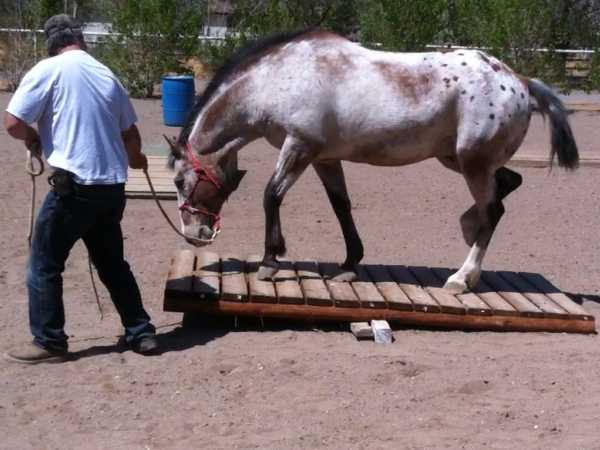
Pedestals. The most challenging obstacle for many horses is the pedestal, especially the tire pedestal. The horse's natural instinct is to go around it. This challenge is great for getting the horse focused and following the handler's or rider's cue instead of the natural instinct to go around.
Patience and clear use of cues and aids are important when a horse becomes confused and uncertain about this challenge.
Developing trust with a new horse - another view of Trooper, three days into being together.
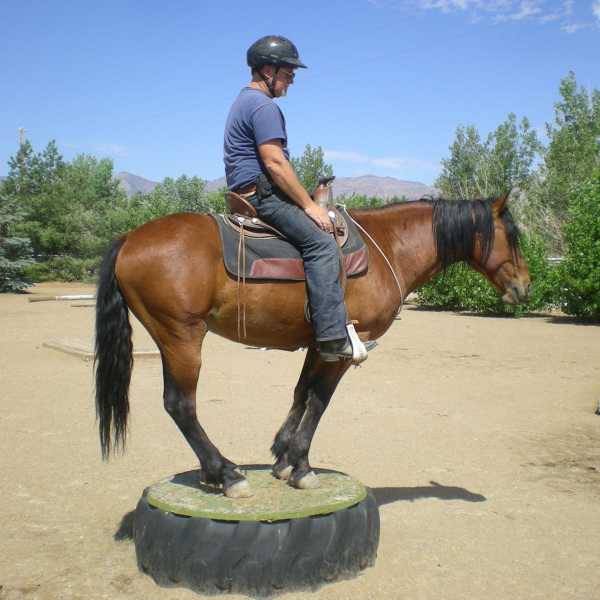
Flag Alley.
(Please note: Before challenging the horses with "Flag Alley," they were independently exposed to "trash boxes," flapping objects, water challenges, tarps, etc.)
Flag Alley is often the culmination of our confidence building challenges. The 50-foot long flag lines define the boundaries of the challenge and provide eye-level visual stimulation while the horses have to also navigate various footwork challenges.
We typically place the footwork challenges sufficiently far apart so that if a horse becomes unsettled, there is sufficient space before the next footwork challenge to settle and regain composure. The object here isn't to charge through the challenge but rather be composed and comfortable with each element within it and remain "connected" with the handler's or rider's cues. Similarly the handler / rider needs to maintain awareness of the horse's concerns in order to provide direction that increases the horse's confidence.
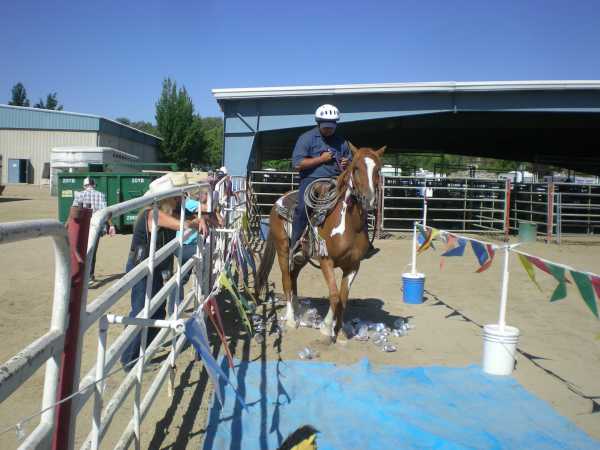
(Backing through the alley)
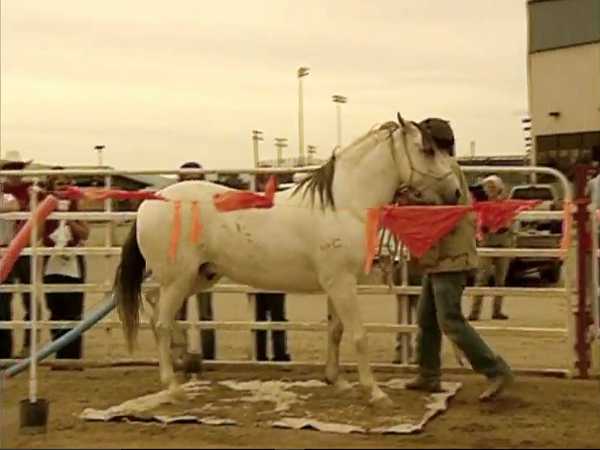
| 

